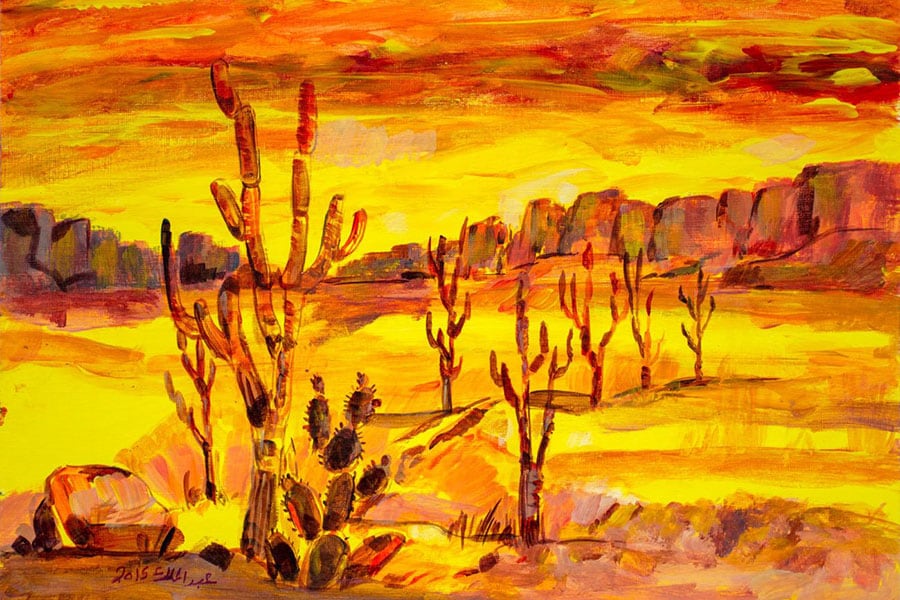
Former Guantánamo Bay detainees rally to free prisoners' artworks
Mansoor Adayfi, Sabri Al-Qurashi, Ghaleb Al-Bihani, Moazzam Begg, Boumedien, Djamel Ameziane, Sami al-Hajj and Ahmed Errachidi implore Joe Biden to not "follow Trump's lead," and to "free" the artworks created in Guantánamo
 "Untitled, Monument-Valley" (2015) by Abdualmalik Abud was exhibited at Catamount Arts as part of the "Art from Guantánamo Bay" exhibition.
Image: Courtesy of Catamount Arts
"Untitled, Monument-Valley" (2015) by Abdualmalik Abud was exhibited at Catamount Arts as part of the "Art from Guantánamo Bay" exhibition.
Image: Courtesy of Catamount Arts
Around 40 prisoners are still being held at Guantánamo Bay, the naval base that was turned into a detention center after the September 11, 2001 attacks. Some of them seek abstraction from their incarceration through the visual arts. But they cannot, however, exhibit their creations.
Guantánamo Bay prisoners have been able to take art classes since 2010. At the time, Barack Obama was working hard to close the military detention center, a symbol of the war on terror and the excesses committed in its name, as he had promised during his presidential campaign. His efforts were unsuccessful, but they prompted Guantánamo officials to implement various initiatives, including art classes, to improve conditions for detainees.
A number of restrictions were imposed: the pencils, colored pens or brushes used by the prisoners did not contain any metal components that could be turned into weapons. However, the project has been a success, and some 30 paintings, sculptures and art objects made in Guantánamo were even exhibited at the John Jay College of Criminal Justice in New York in 2017.
This exhibition, entitled "Ode to the Sea," received extensive international media coverage. Much to the displeasure of the Pentagon. Shortly after the exhibition opened, the US Department of Defense decided to suspend the release of the Guantánamo detainees' artworks pending a review of the policy in place. Prisoners had previously been allowed to send the works to their lawyers, as a thank-you gift or for safekeeping, for example.
This is now impossible. Artworks created in Guantánamo Bay are considered, de facto, the property of the US government. It can then use them as it sees fit, and even destroy them. "One of my clients was told that, even if he were ever to be released, that he would not be able to take his art with him, and that it would be incinerated," Ramzi Kassem, a professor at the City University of New York School of Law, whose legal clinic represents several men held at Guantánamo Bay, told the New York Times in 2017.

















